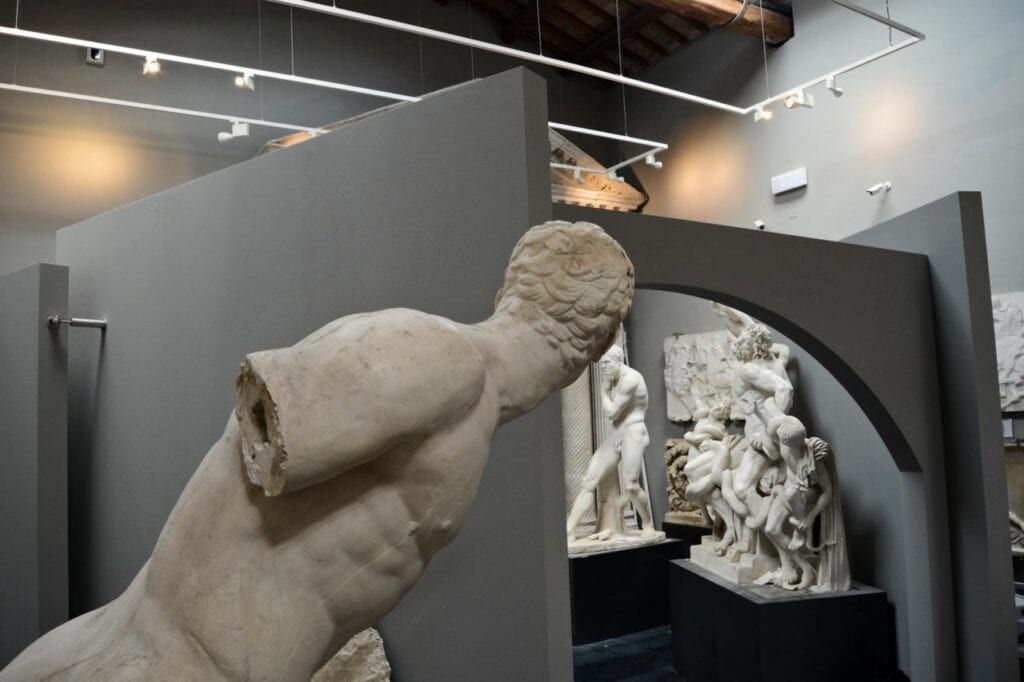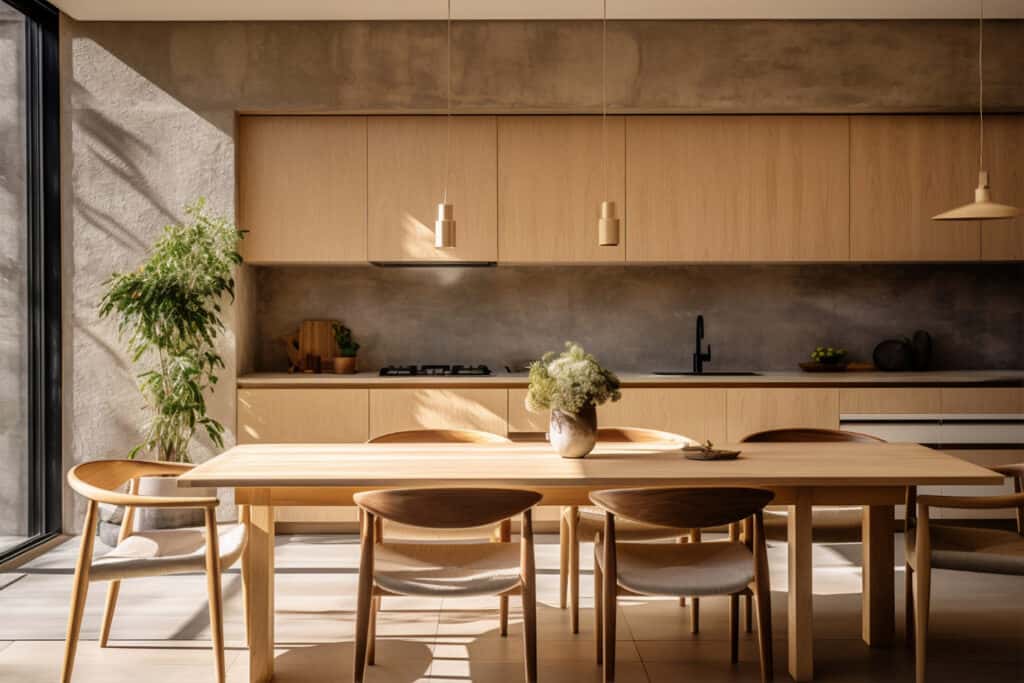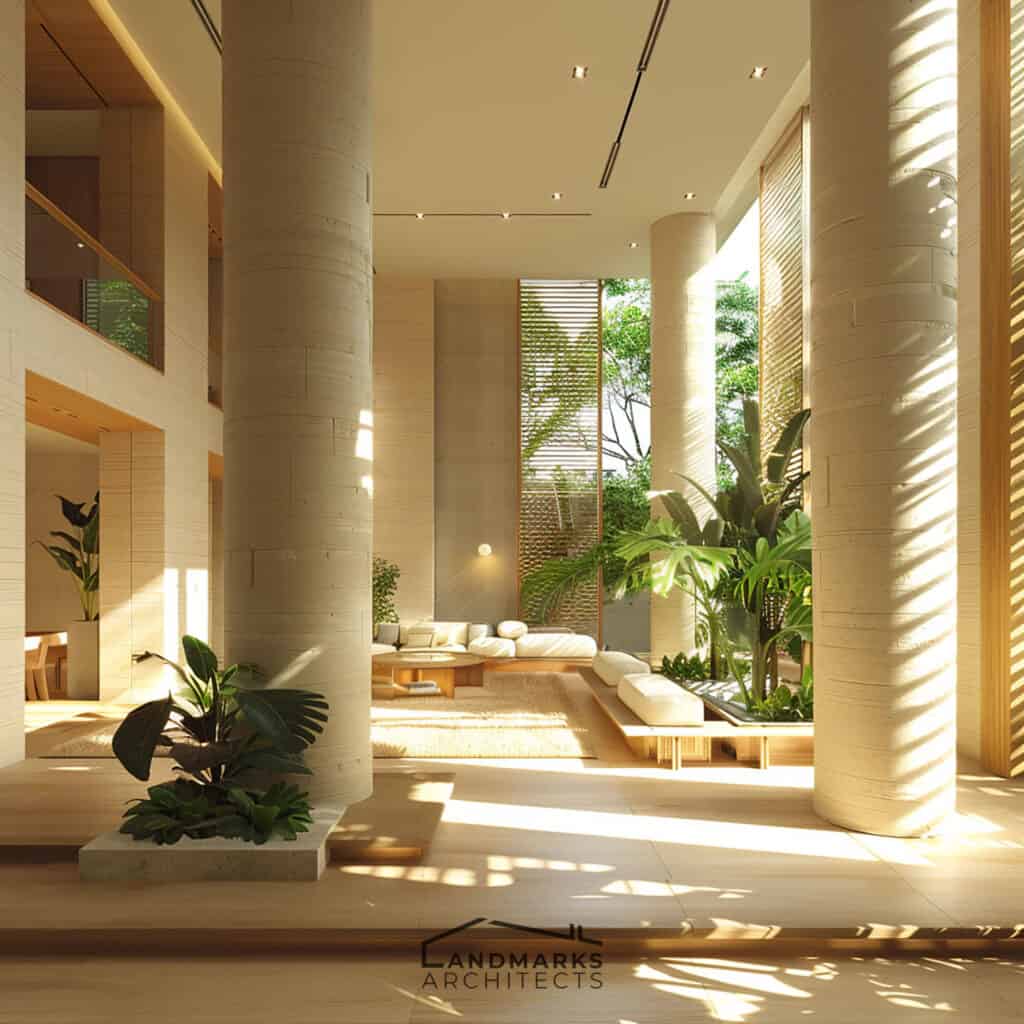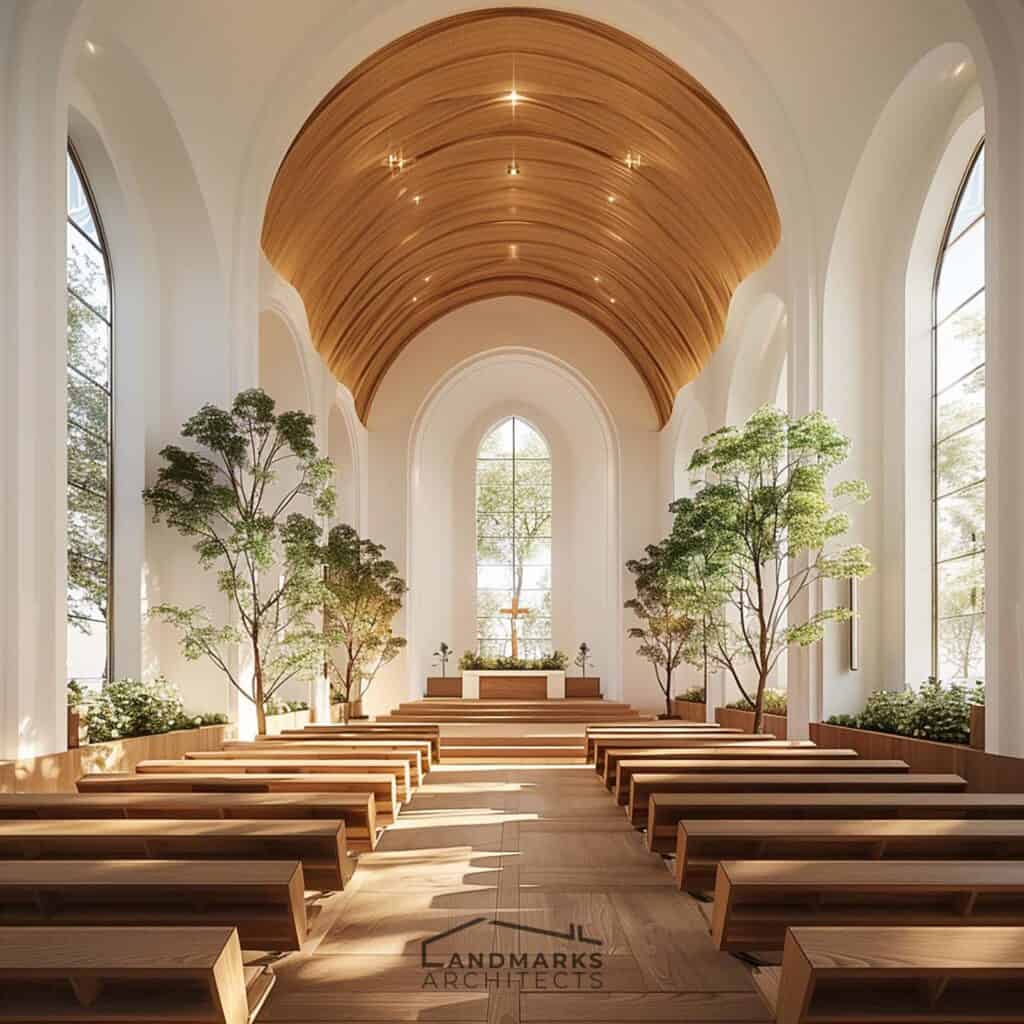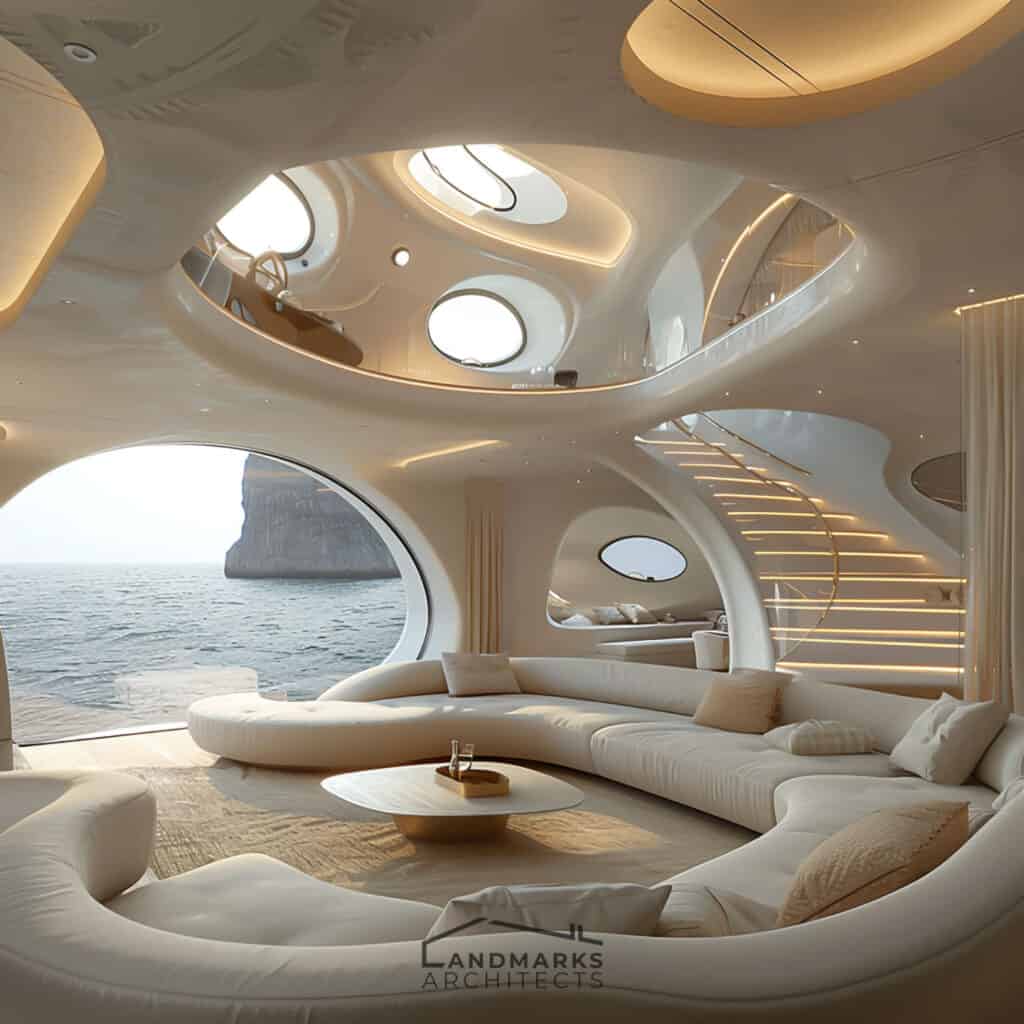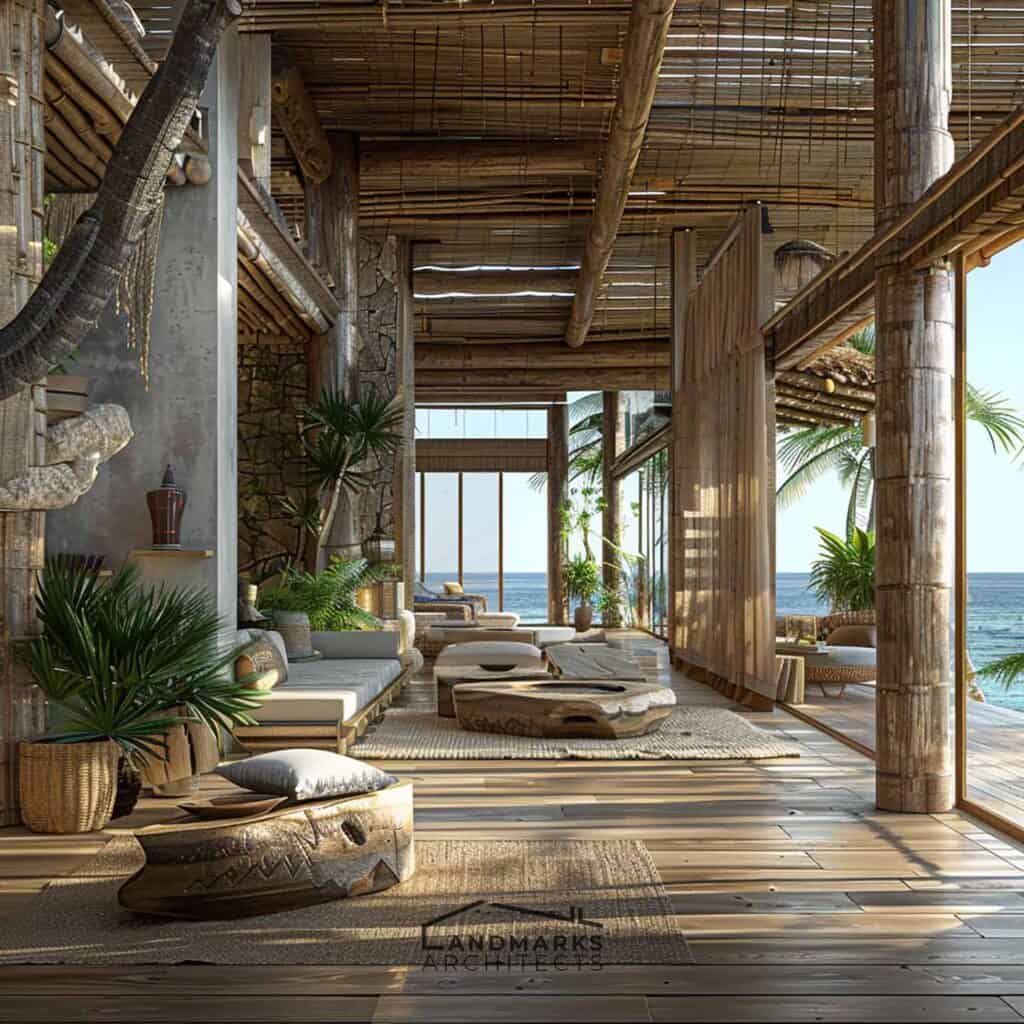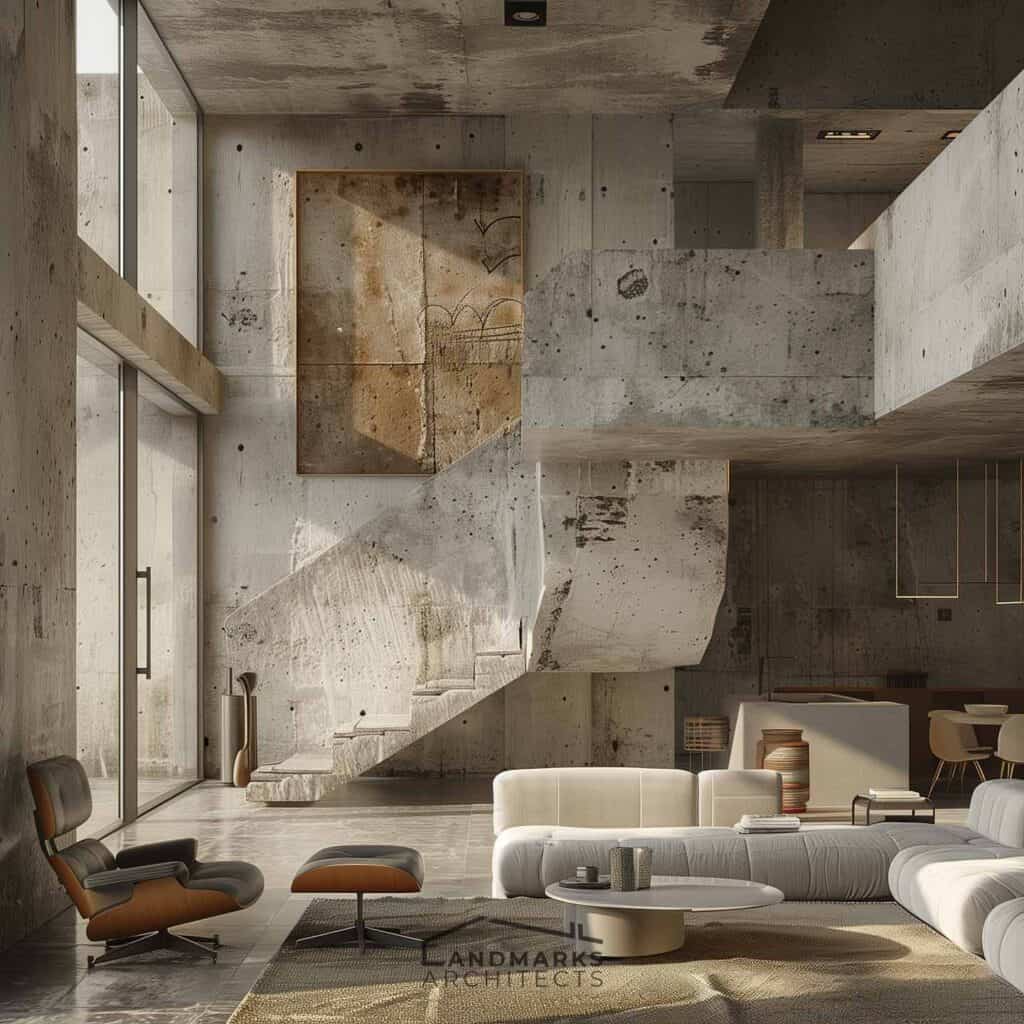
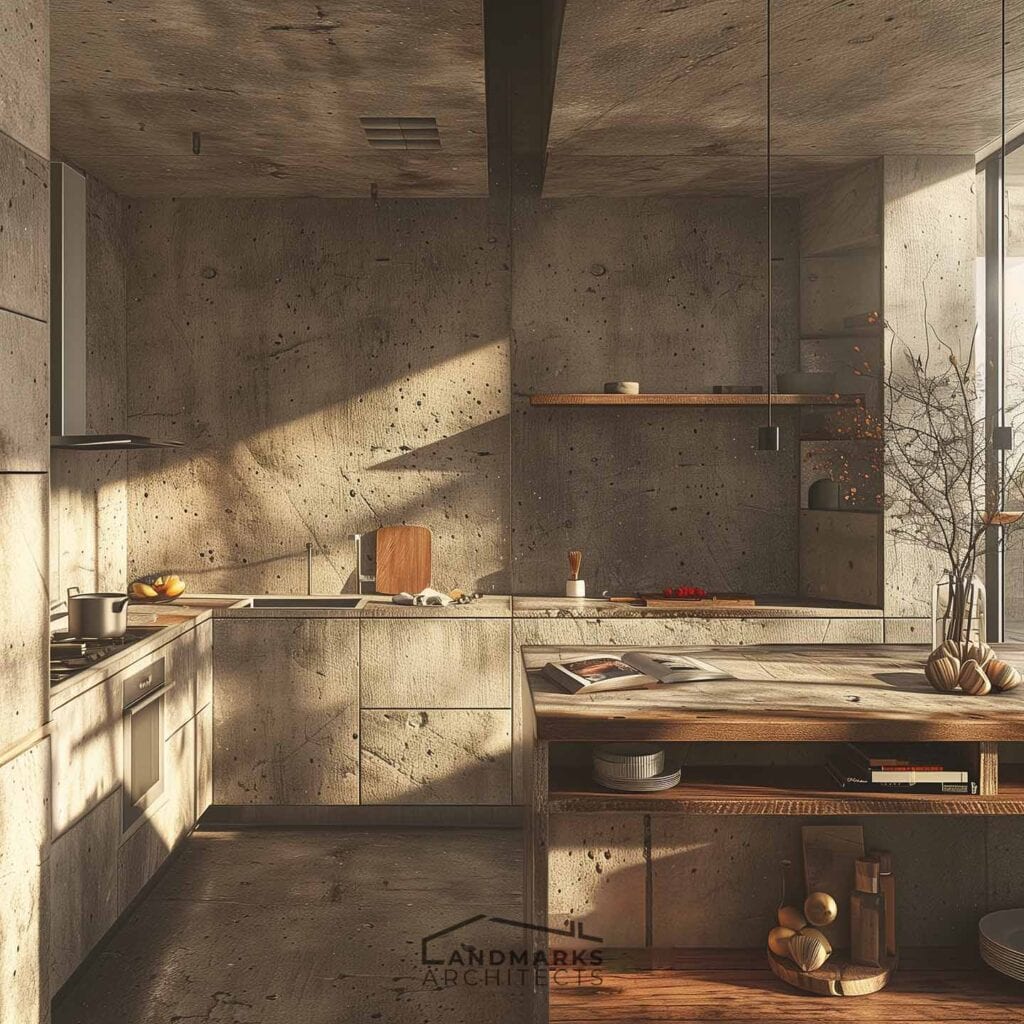
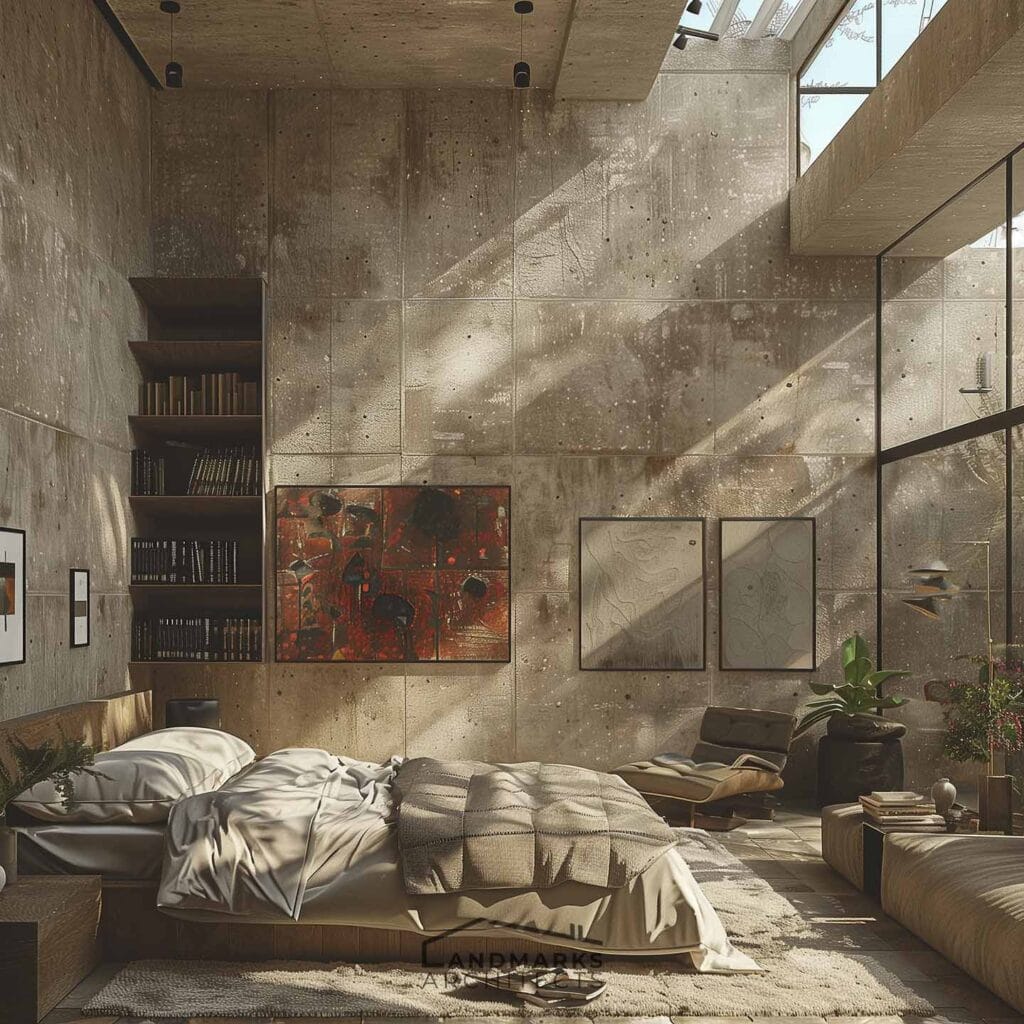
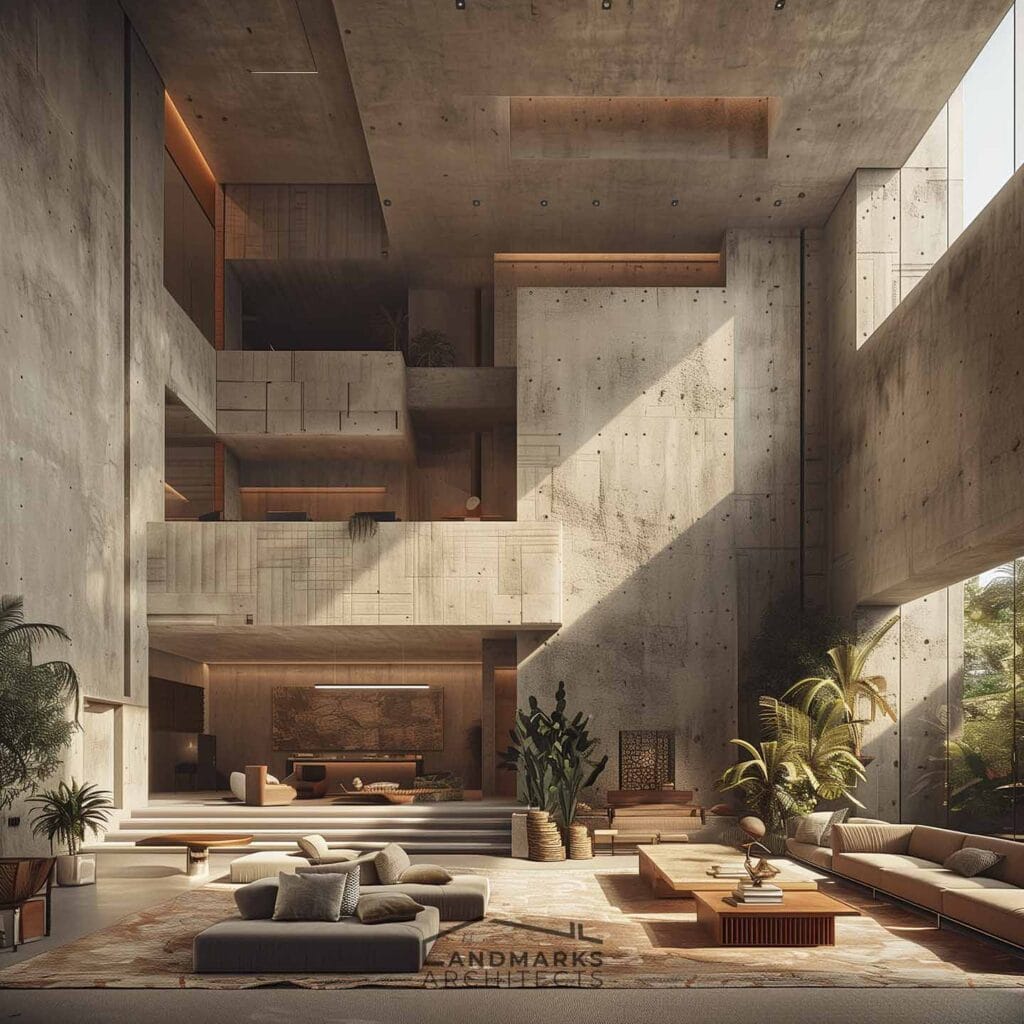
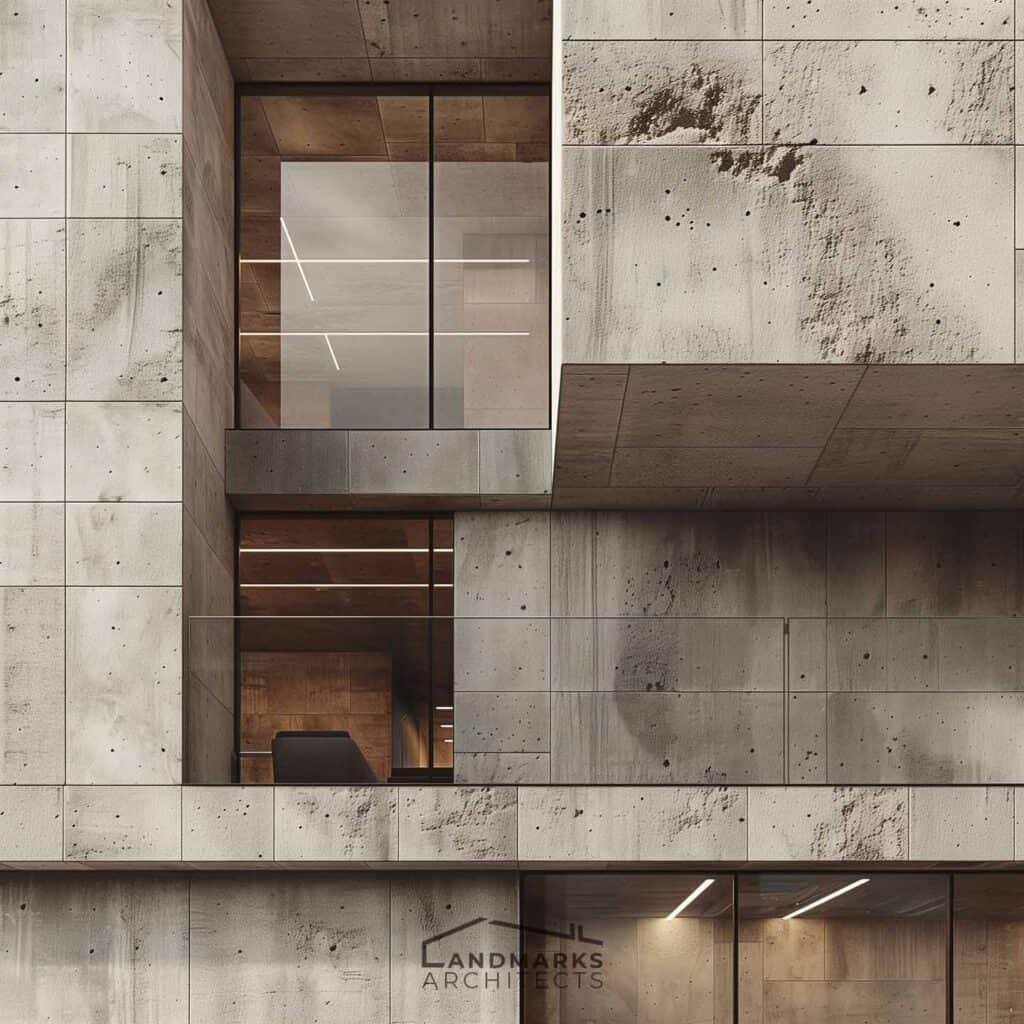
Welcome to our examination of Brutalist interior architecture. This architectural style, originating from the French term “béton brut,” meaning raw concrete, emerged in the mid-20th century as a departure from ornate designs. Its embrace of industrial materials and geometric forms defied traditional beauty standards, ushering in a new era prioritizing honesty, functionality, and material celebration.
In this article, we explore the essence of Brutalist interior design, tracing its historical roots and examining its key characteristics, from the raw materials and textures that define its aesthetic to the bold geometric forms and minimalist principles that shape its spatial experience.
Historical Context of Brutalist Interior Architecture
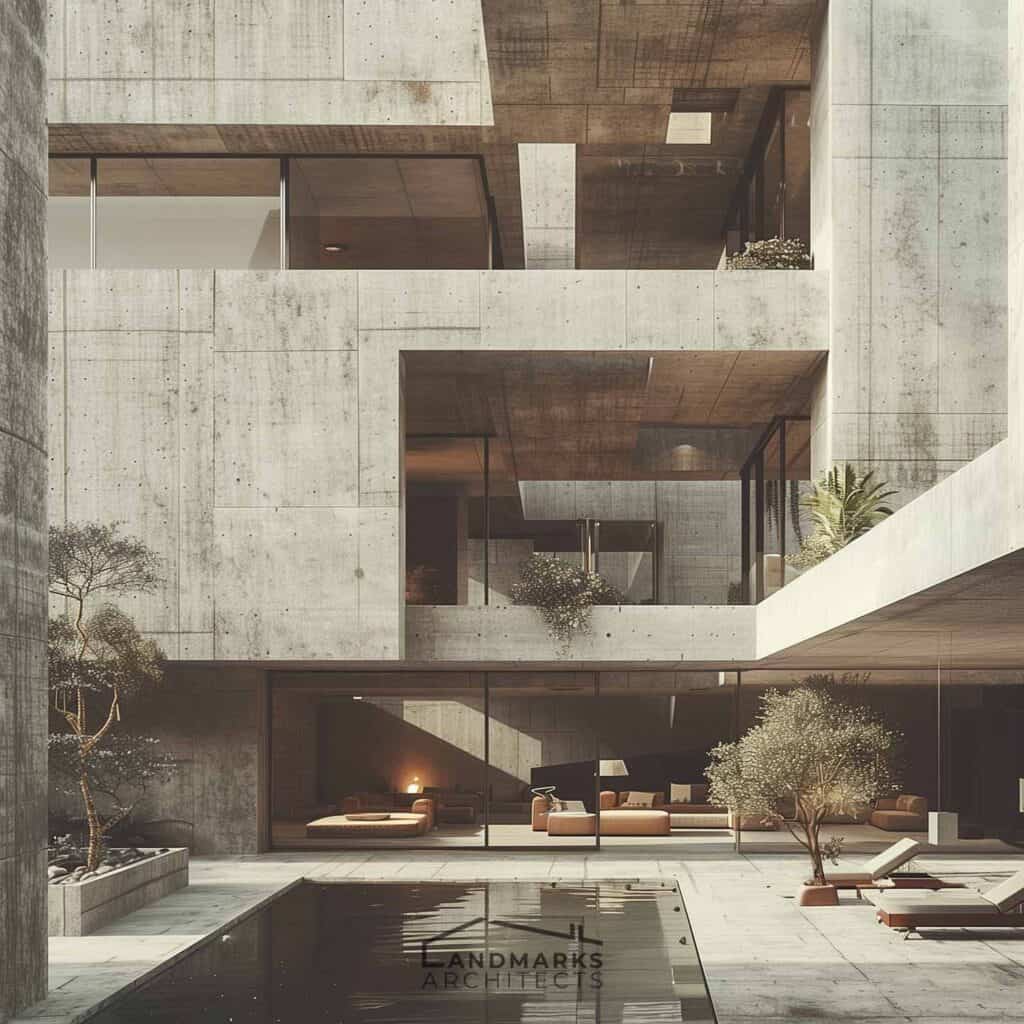
The inception of Brutalist style emerged from the post-war reconstruction phase in Europe, with architects aiming to establish a fresh architectural language resonating with the era’s ethos. Departing from the embellished intricacies of previous styles, visionaries like Le Corbusier, Peter and Alison Smithson, and Paul Rudolph championed a minimalist approach, highlighting the raw essence of materials like concrete, steel, and glass. This marked the birth of Brutalism, a movement characterized by its emphasis on functionality, structural honesty, and social purpose.
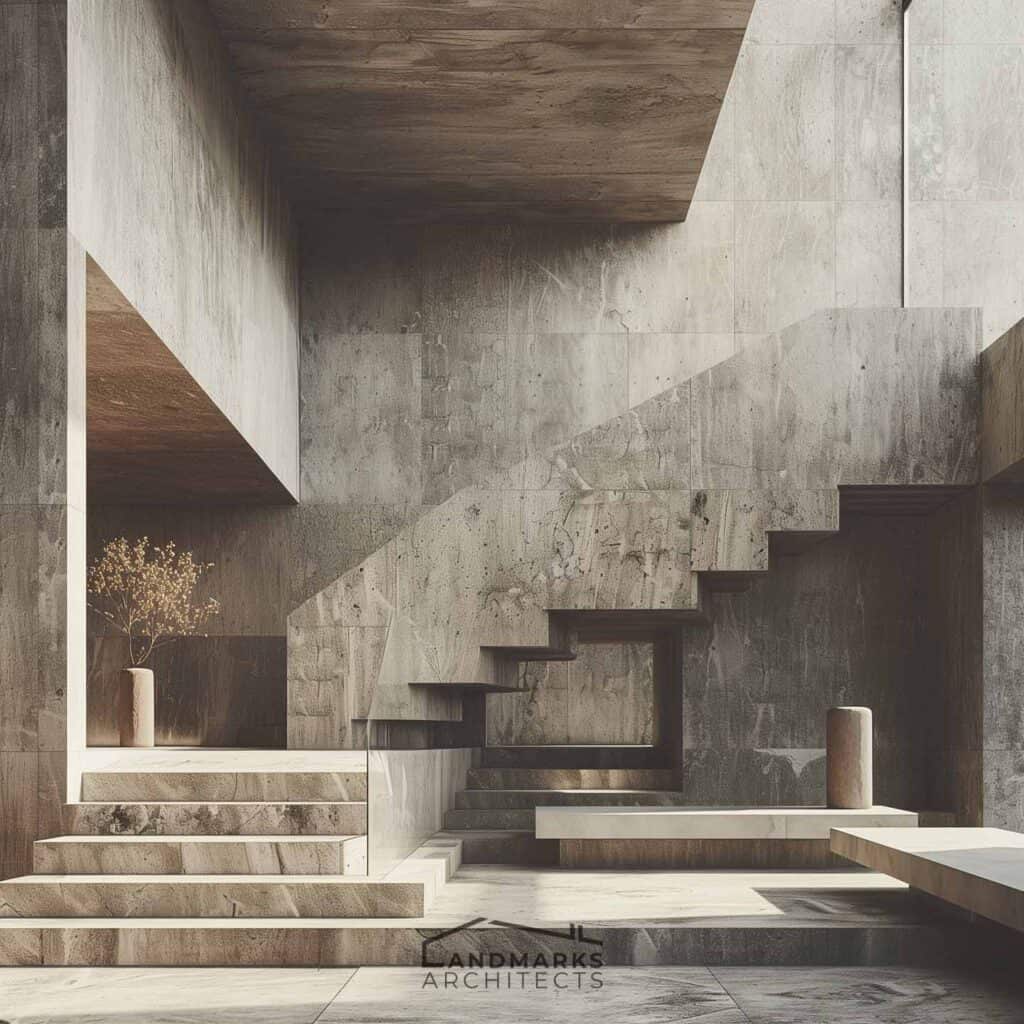
As Brutalism gained traction, its influence transcended the domain of exteriors to infiltrate interior spaces. Brutalist Interior Design emerged as a natural extension of the movement’s principles, offering a canvas for architects and designers to explore the expressive potential of raw materials within the confines of built environments. Brutalist architecture swiftly gained prominence, adorning not just residential abodes but also institutional edifices, thereby imprinting a lasting legacy on the architectural panorama.
Key Characteristics of Brutalist Interior Architecture
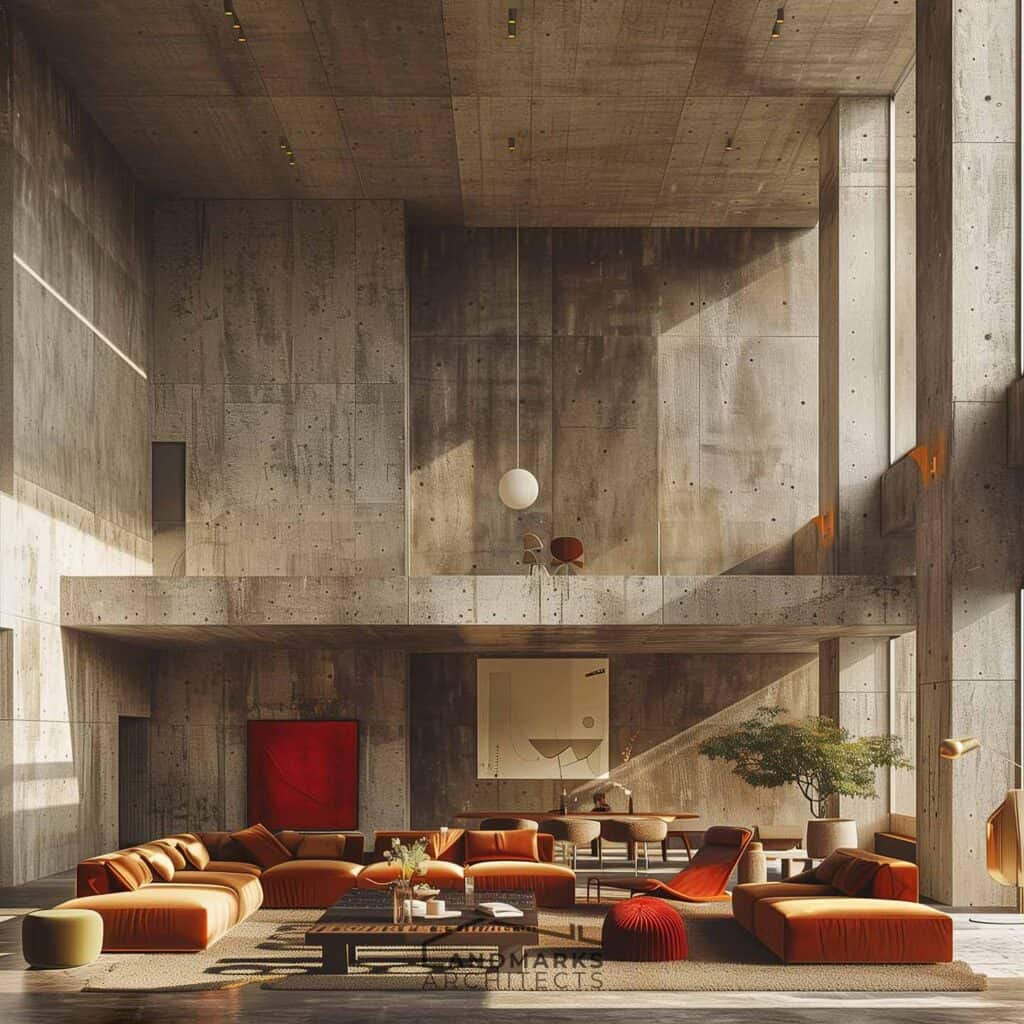
Brutalist interior design is defined by distinct features that set it apart from other architectural styles. These elements work in harmony to create spaces that are both visually striking and functionally efficient, embodying the ethos of Brutalism – honesty, simplicity, and the celebration of materials. In this section, we explore the key characteristics of Brutalist interior architecture in detail.
1. Raw Materials and Textures
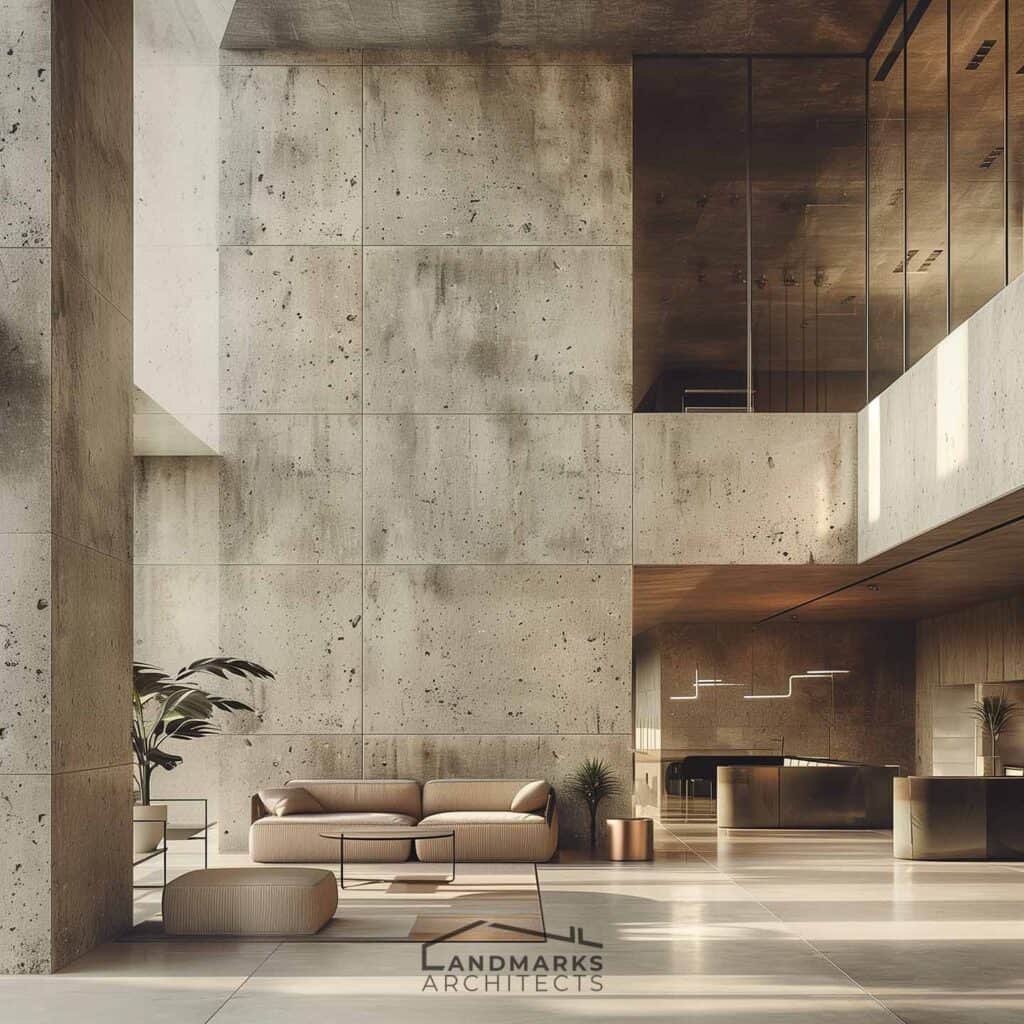
Central to the essence of Brutalist architecture is a deep respect for raw materials and textures. Diverging from conventional architectural paradigms that prioritize concealment and ornamentation, Brutalist buildings celebrate the intrinsic characteristics of materials like concrete, steel, and glass.
Bare concrete emerges as the focal point, seamlessly blending structural integrity with aesthetic allure. Left exposed and untreated, concrete walls and surfaces bear the marks of their construction, imbuing spaces with a sense of authenticity and character.
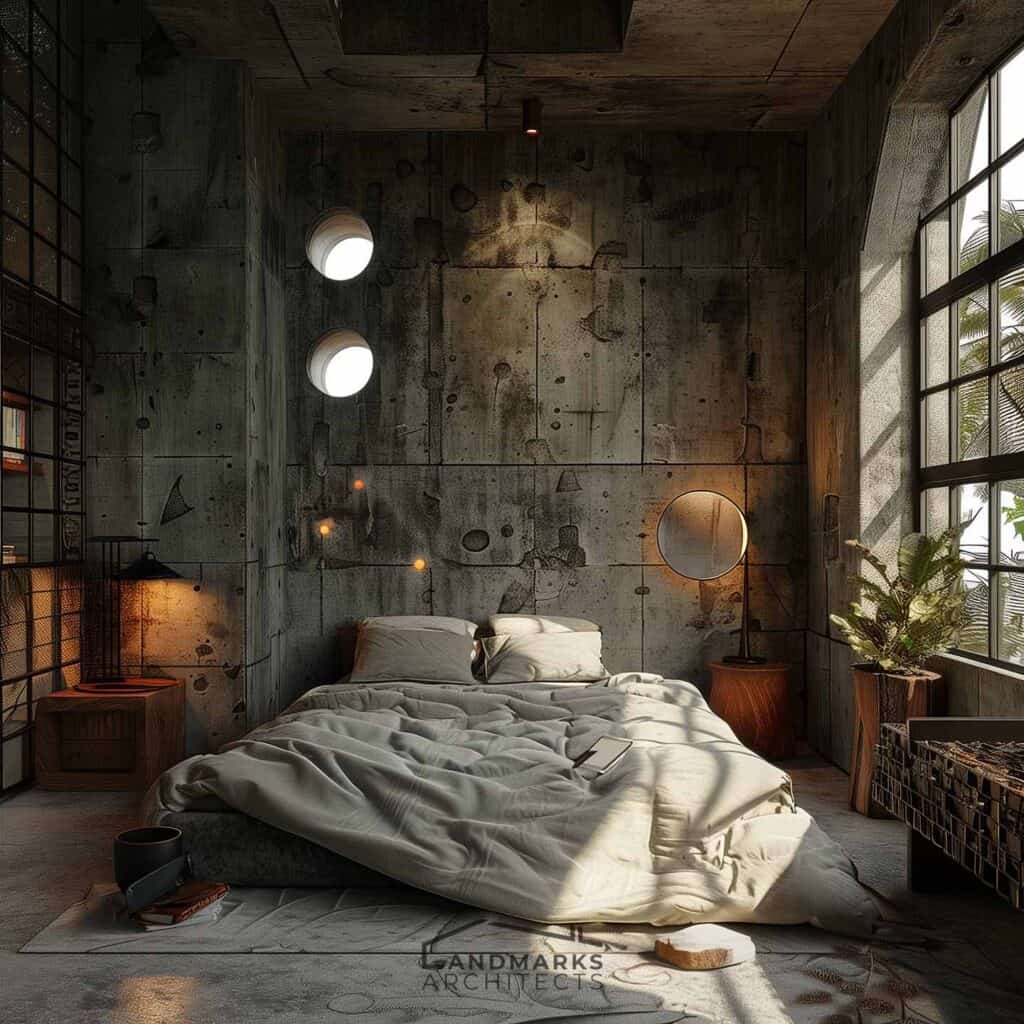
The rough texture of concrete contrasts with the smoothness of glass and steel, creating visual interest and tactile richness. This celebration of raw materials extends beyond aesthetics to encompass sustainability and durability, with Brutalist interiors standing as testaments to the timeless appeal of honest construction.
2. Bold Geometric Forms and Structural Elements
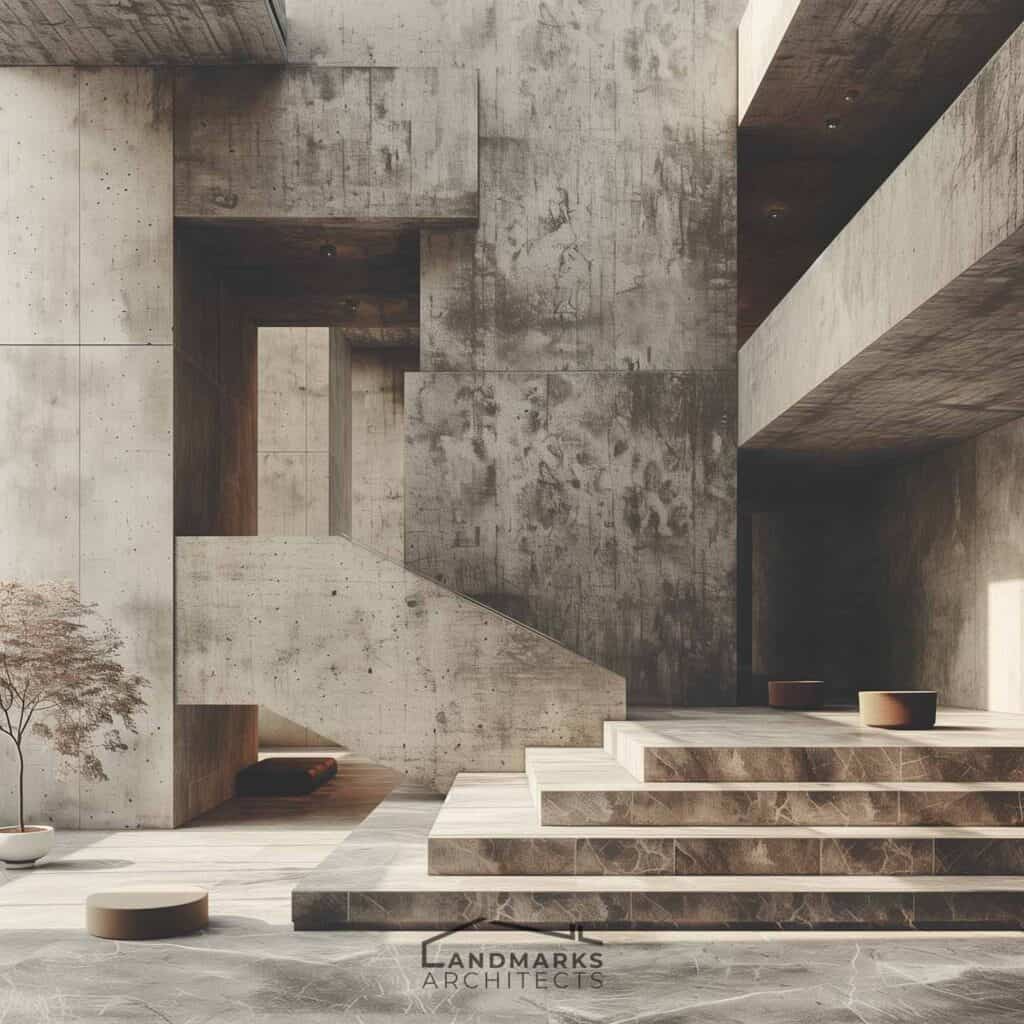
Brutalist interior design encapsulates the essence of bold geometric forms and structural components, reflecting the movement’s commitment to clarity and organization within interior architecture. Instead of concealing, the brutalist design celebrates structural components like beams, columns, and slabs, orchestrating a rhythmic composition in the built environment.
These elements serve dual roles, providing both support and visual allure. Bold cantilevers, dramatic angles, and sculptural shapes characterize the architectural lexicon of brutalist design, instilling a sense of monumentality and presence. This geometric clarity extends to spatial organization, delineating rooms, and volumes with crisp lines and exact proportions.
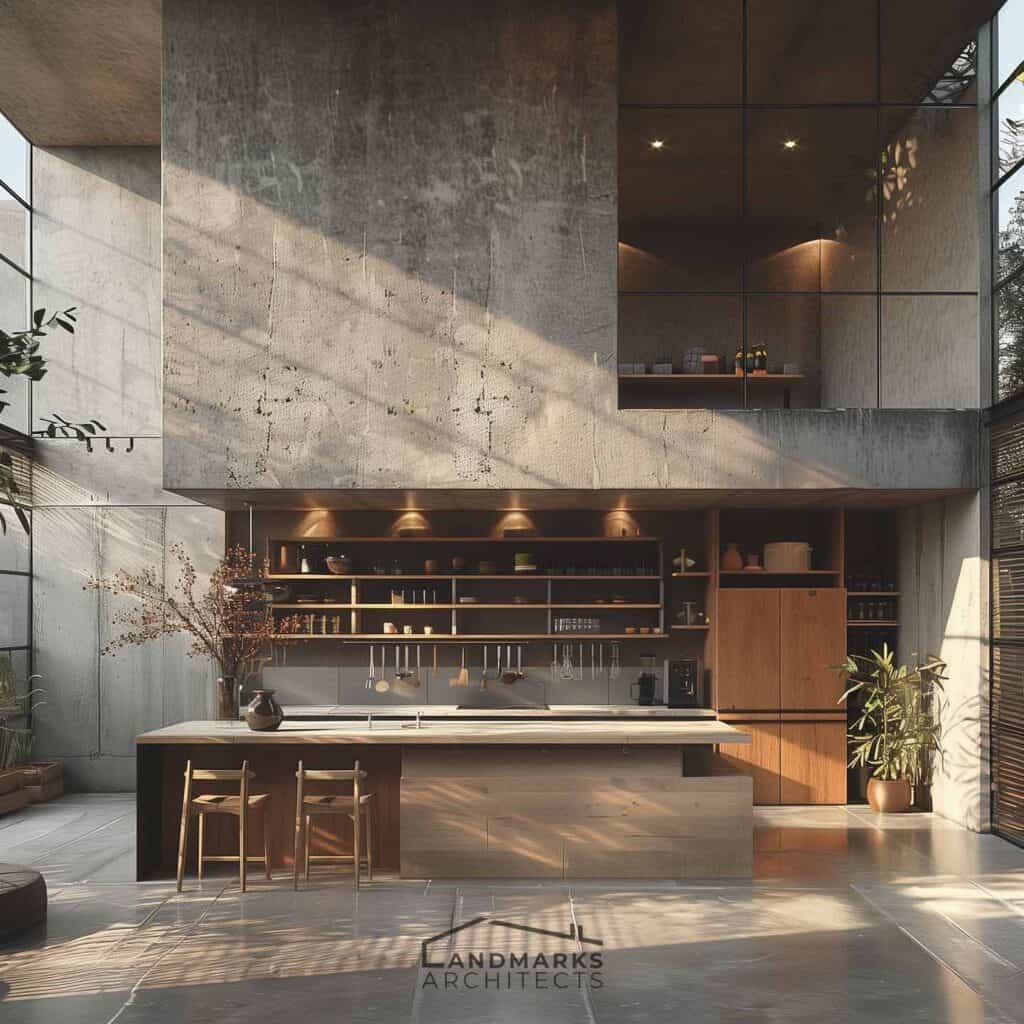
3. Minimalist Aesthetic and Functional Design Principles
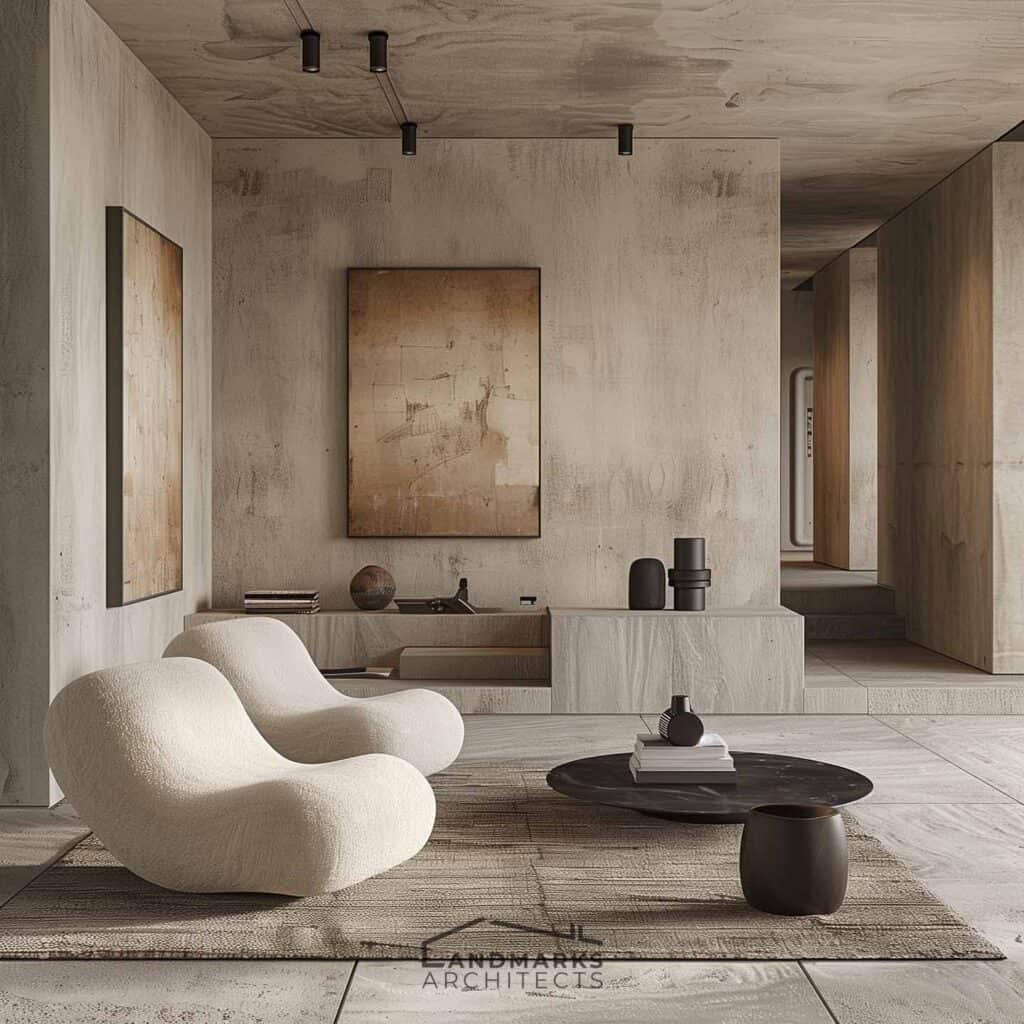
At the core of the Brutalist interior design style lies a minimalist ethos marked by clean lines, uncluttered spaces, and a focus on functionality. Each space is meticulously crafted for practicality and efficacy, ensuring that every aspect serves a distinct purpose. Excess ornamentation is eschewed in favor of simplicity and restraint, allowing the inherent beauty of materials to take center stage.
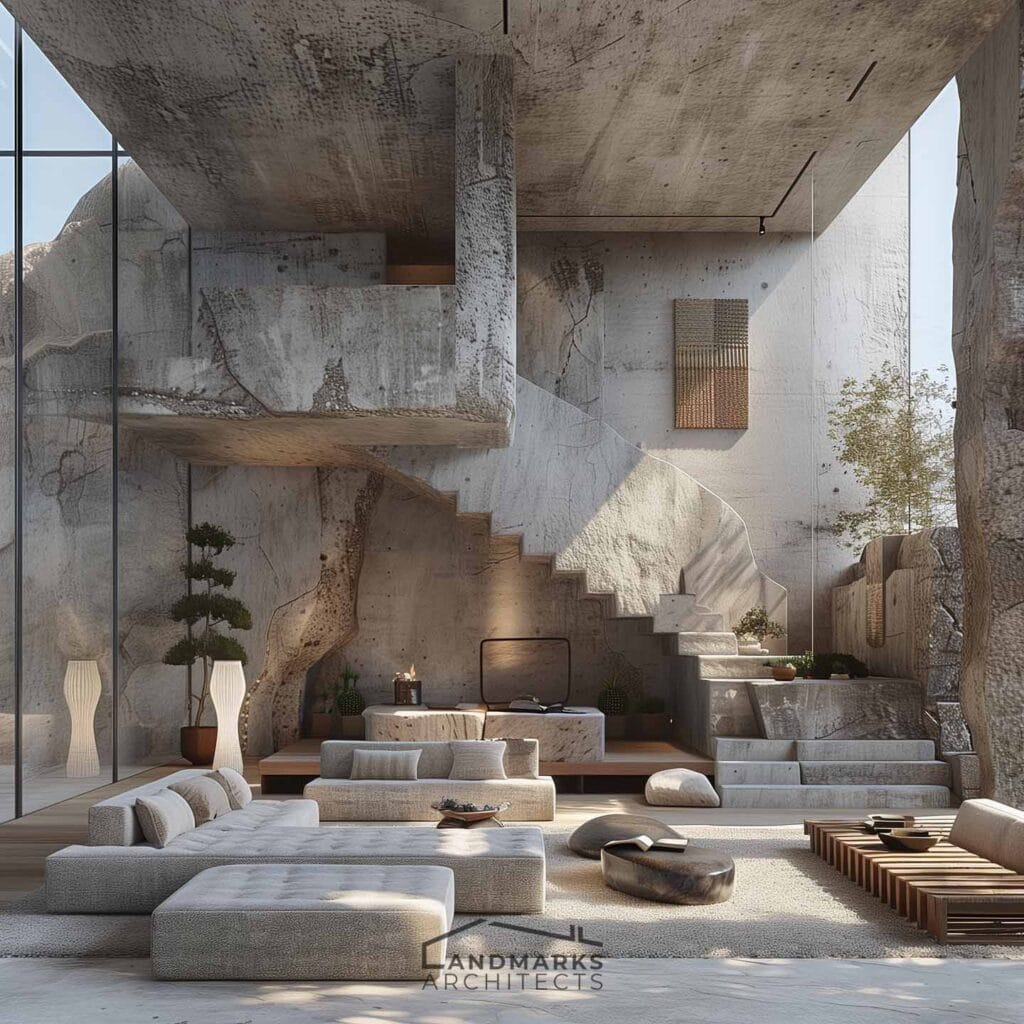
Brutalist furniture embraces a minimalist aesthetic, complementing rather than competing with the architectural framework. This minimalist approach not only creates visually striking interiors but also fosters a sense of tranquility and calmness, inviting occupants to engage with their surroundings in a meaningful way.
4. Integration of Natural Light and Shadow
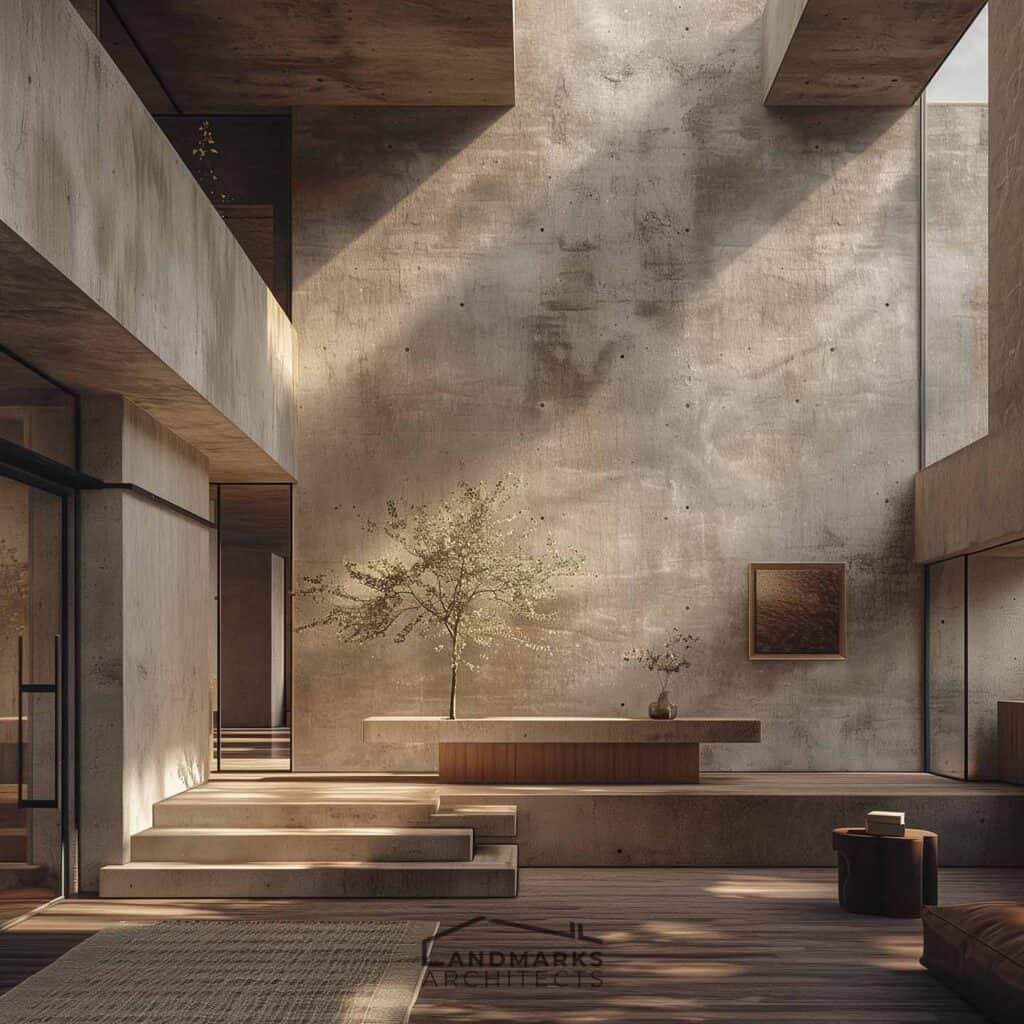
Natural light plays a crucial role in interior design Brutalism, casting dynamic patterns and textures that animate spaces throughout the day. Large expanses of glazing allow daylight to penetrate deep into interiors, blurring the boundaries between inside and outside. Shadows cast by structural elements create ever-changing visual compositions, adding depth and drama to the architectural experience.
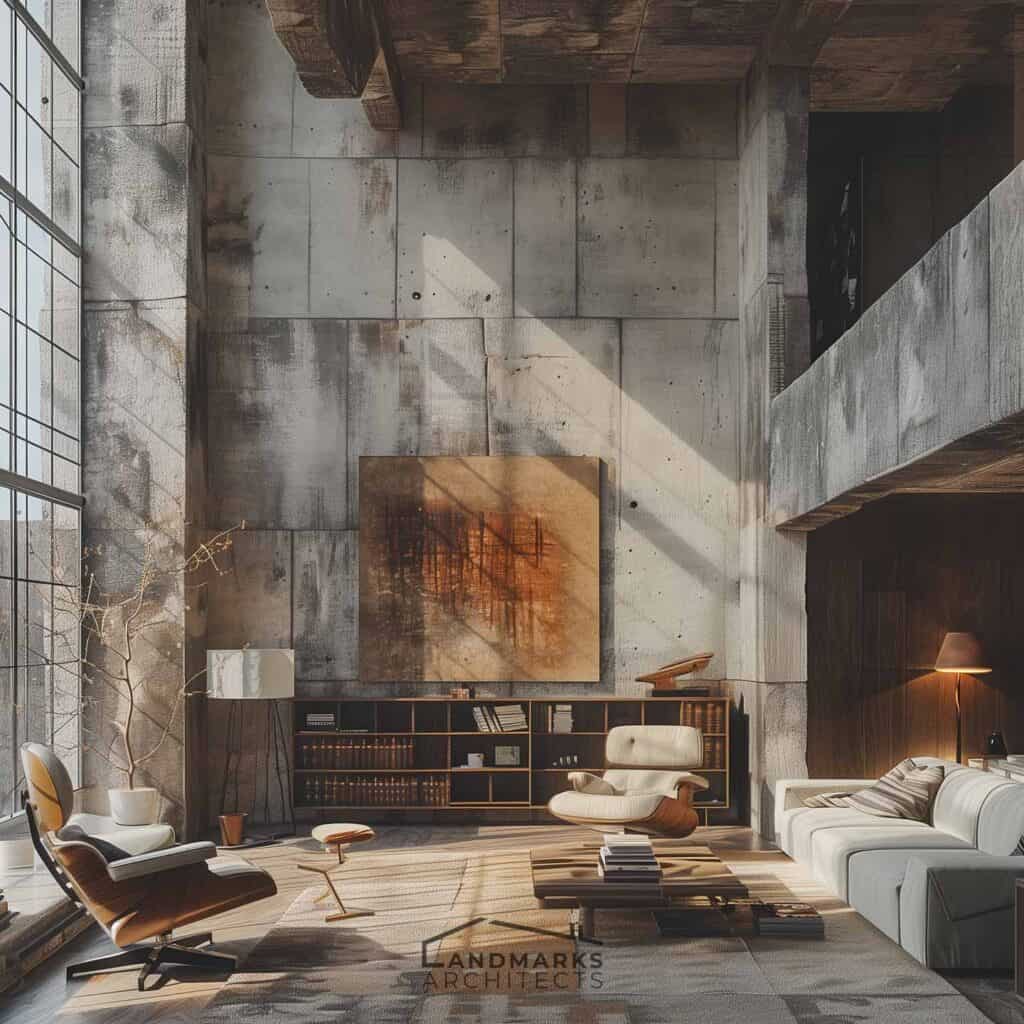
In Brutalist interiors, light is not just a functional necessity but a design element in its own right, shaping the mood and atmosphere of spaces. The interplay of light and shadow accentuates the rawness of materials, highlighting their textures and surfaces in unexpected ways.
5. Impact of Scale and Proportions on Spatial Experience
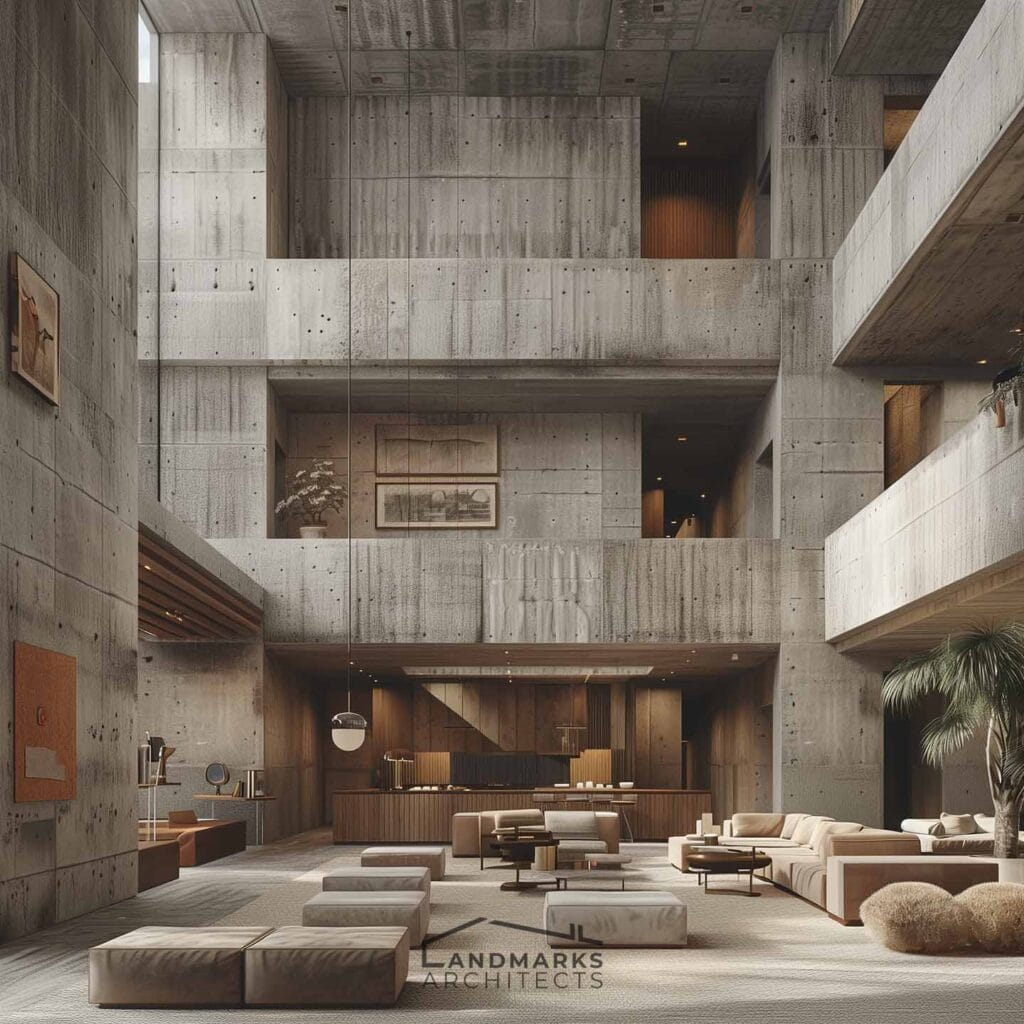
The scale and proportions of spaces are carefully considered in Brutalist interior architecture, shaping the overall spatial experience and evoking a sense of monumentality and grandeur. Large, open-plan layouts create a sense of expansiveness and freedom, while intimate alcoves and niches provide moments of privacy and contemplation.
Ceilings are often lofty, with exposed structural elements soaring overhead, creating a sense of verticality and volume. The juxtaposition of scale, from vast atriums to intimate seating areas, enhances the dynamism and diversity of spaces, encouraging exploration and discovery. Proportions are similarly calibrated to create a harmonious balance between form and function, with careful attention paid to the relationship between elements and the human scale.
Examples of Brutalist Interior Architecture
To truly grasp the essence of Brutalist interior architecture, one must venture beyond theoretical discourse and engage oneself in the built environment. Iconic examples from around the world serve as testaments to the movement’s enduring legacy and influence.
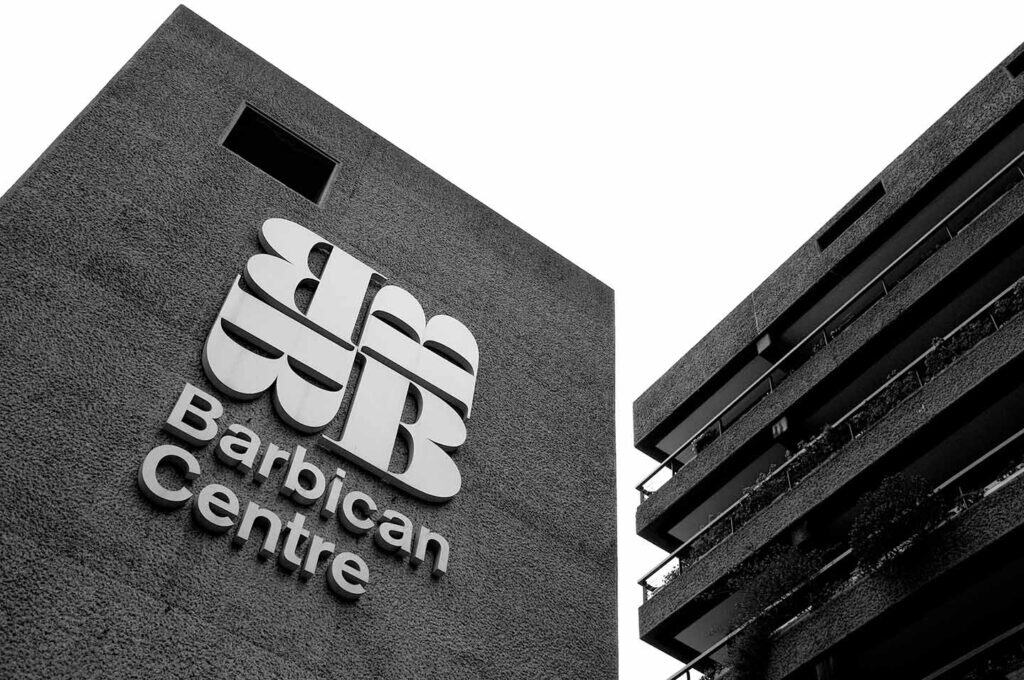
Barbican Centre: The Barbican Centre in London, designed by Geoffry Powell, Christoph Bon, and Peter ‘Joe’ Chamberlin, stands as a quintessential example of Brutalist Interior Architecture. Its exposed concrete walls create a sense of drama and monumentality that is unmatched in contemporary design.
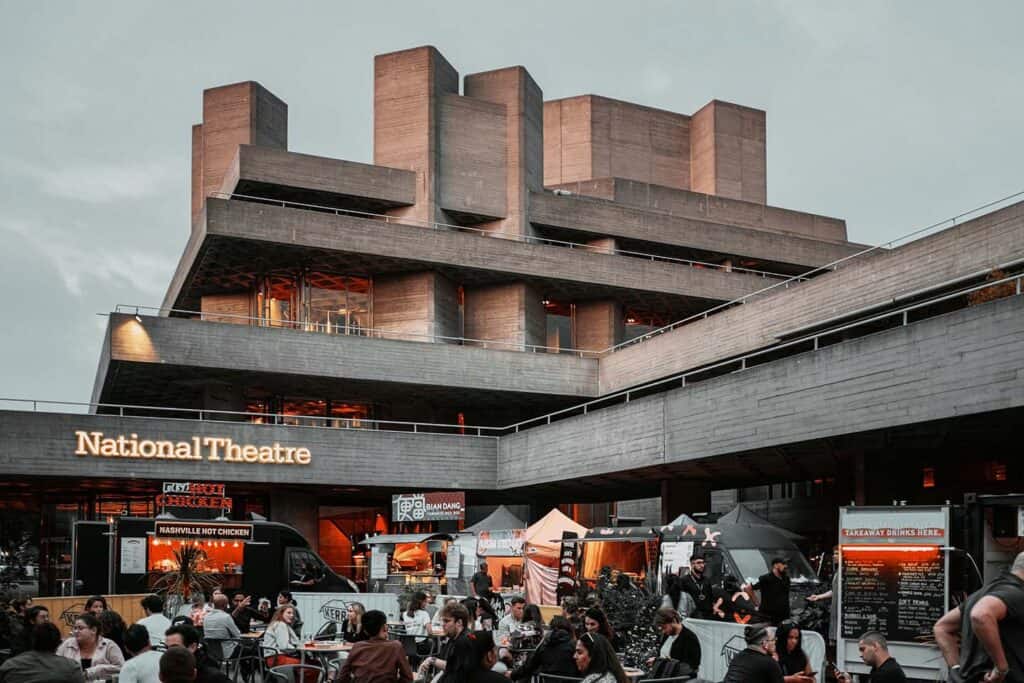
National Theatre: The National Theatre in London, designed by Denys Lasdun, showcases the expressive potential of raw materials, with its sculptural forms and interlocking volumes.
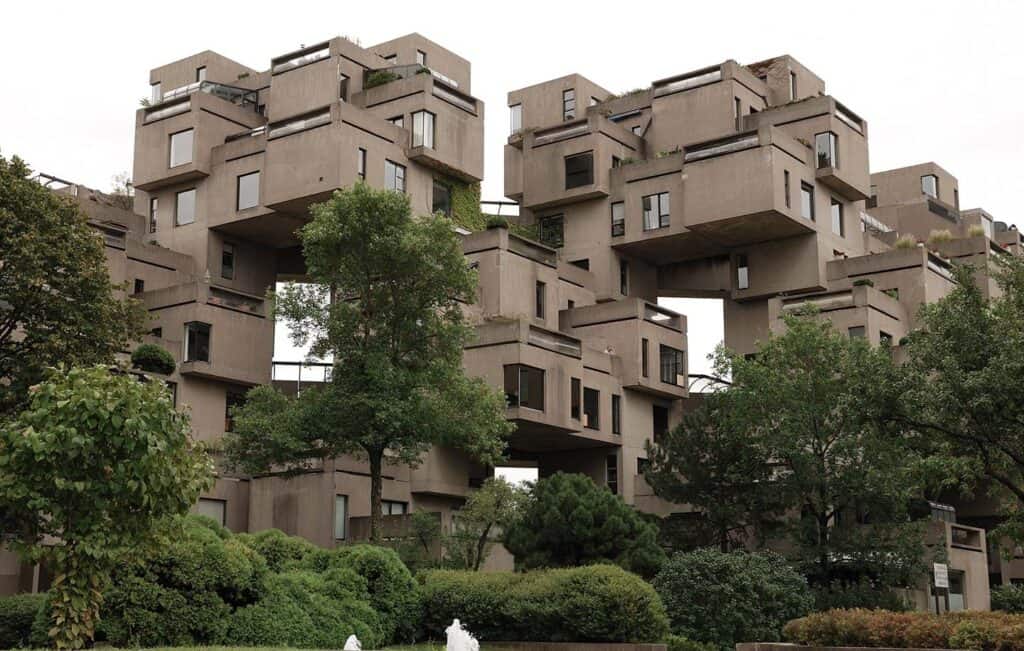
Habitat 67 housing complex: The Habitat 67 housing complex in Montreal, designed by Moshe Safdie, exemplifies the Brutalist ethos of combining modular construction with expressive design. Its stacked concrete blocks create a sense of intimacy and privacy while maximizing views and natural light.
Contemporary Applications and Adaptations
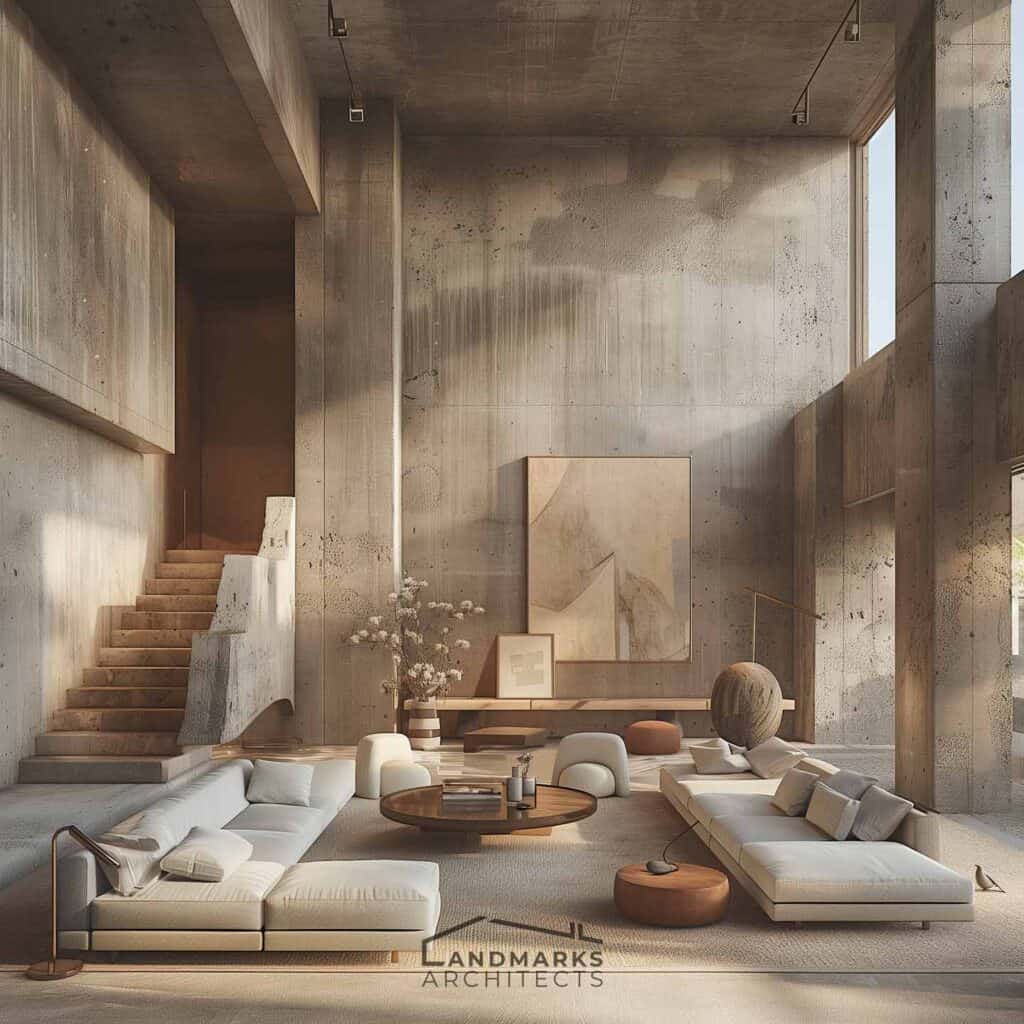
In contemporary interior design, the legacy of Brutalism remains palpable, resonating through the work of key Brutalist artisans. These designers reimagine the Brutalist aesthetic, infusing modern spaces with raw concrete and industrial elements. Furthermore, the ascent of sustainable architecture revitalizes Brutalist interior design, emphasizing natural materials and passive design techniques. Amidst an era dominated by mass production and transience, Brutalism stands as a poignant testament to the allure of simplicity and the enduring charm of timeless design.
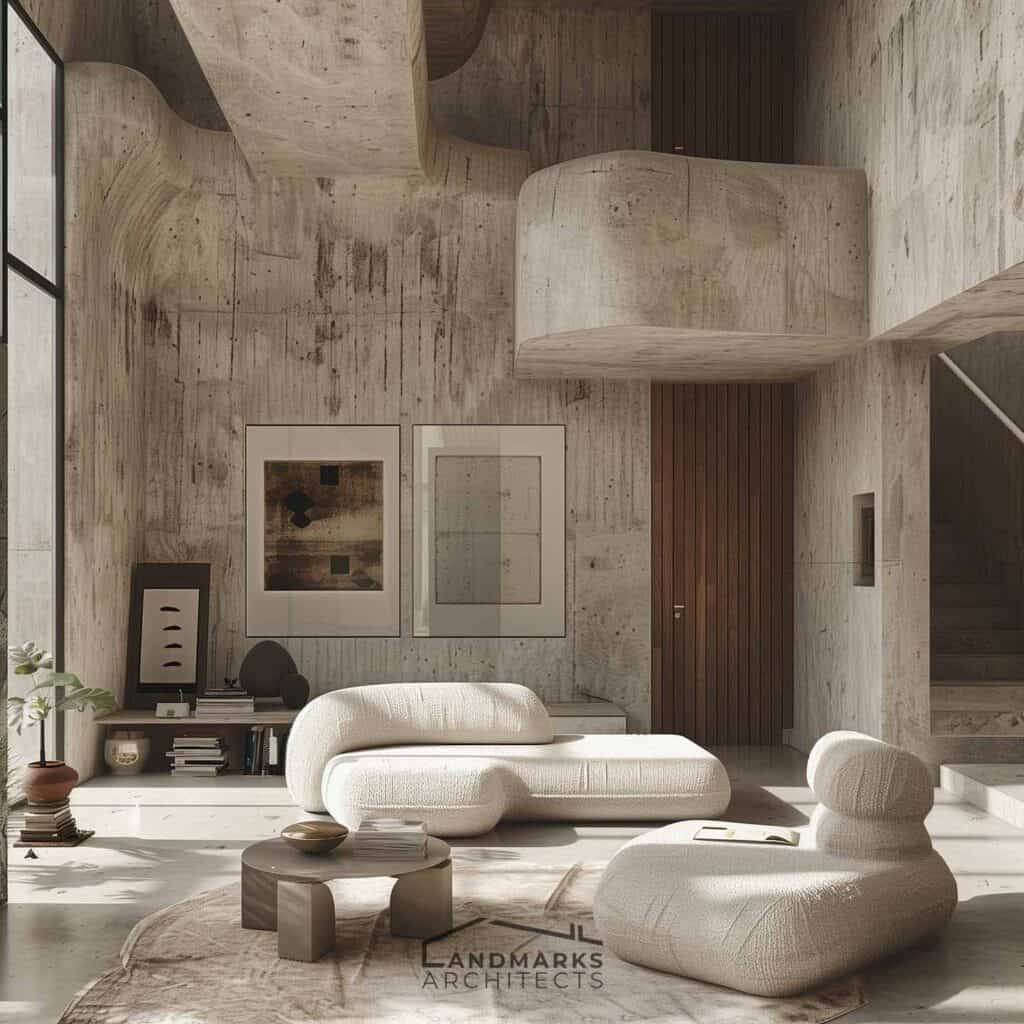
In addition to new construction, Brutalist interior architecture has seen a resurgence in adaptive reuse projects, where existing buildings are repurposed and transformed to meet the needs of contemporary occupants. The conversion of former industrial spaces into residential lofts, art galleries, and cultural centers has become increasingly common, with architects and designers embracing the rugged charm of exposed concrete and weathered steel. These projects breathe new life into forgotten structures, preserving their heritage while adapting them for future use.
Critique and Controversies
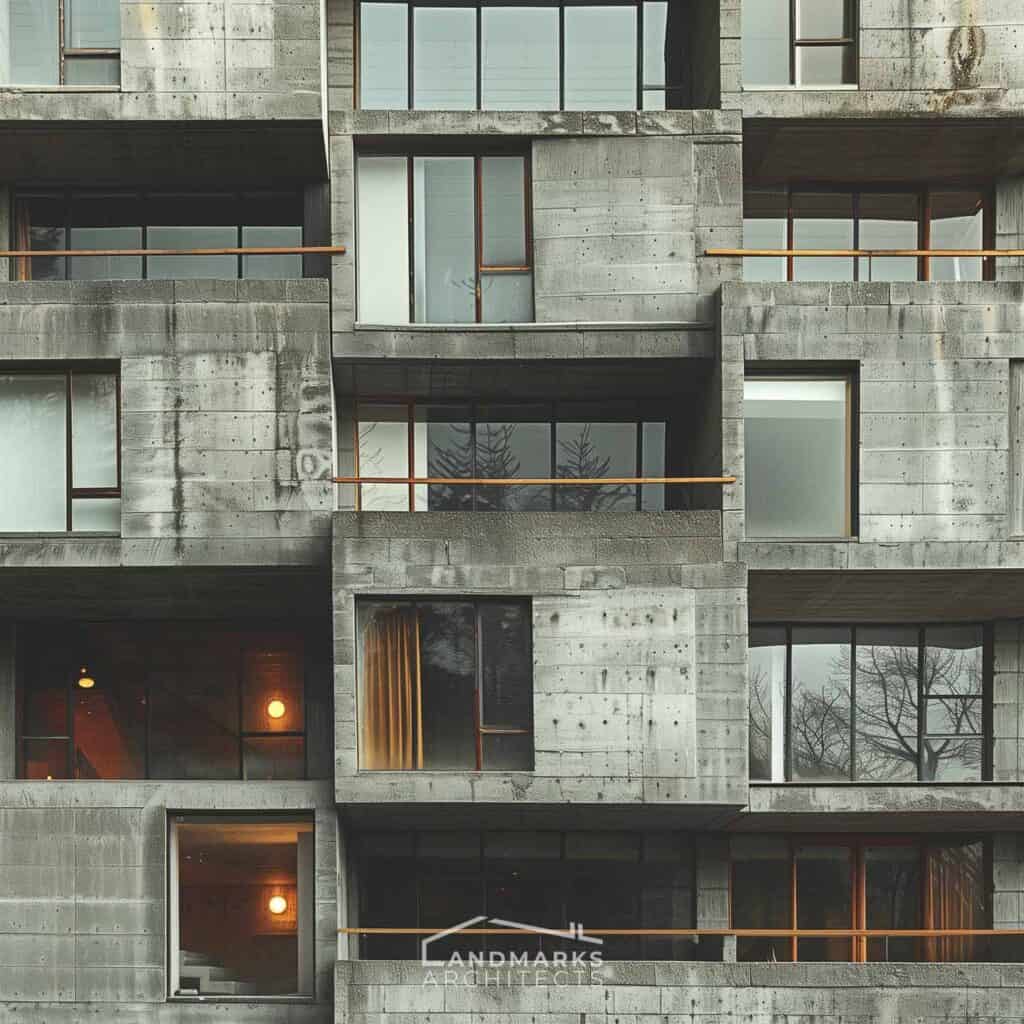
Despite its enduring popularity among architects and design enthusiasts, Brutalism has not been immune to criticism. Detractors argue that Brutalist interiors can feel cold and austere, lacking the warmth and comfort traditionally associated with domestic spaces. There are also practical challenges associated with maintaining raw concrete surfaces, which can be prone to staining and deterioration over time. However, proponents of Brutalist interior architecture argue that its uncompromising aesthetic is precisely what makes it so compelling, challenging us to rethink our preconception.
Brutalist Interior Architecture: A Recap

In conclusion, Brutalist interior architecture stands as a testament to the power of simplicity, functionality, and the expressive use of materials. From its humble beginnings in post-war Europe to its enduring influence on contemporary design, Brutalism has left an indelible mark on the architectural landscape.
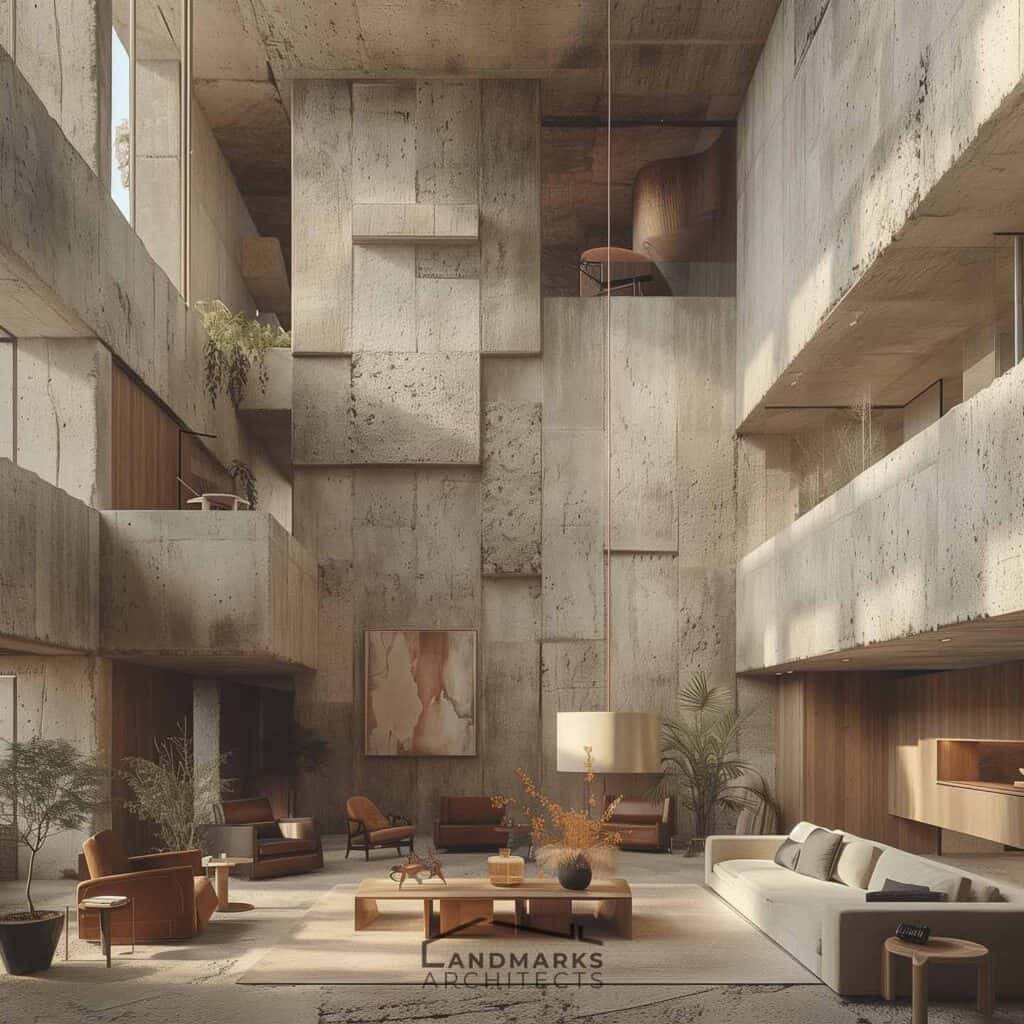
As we continue to grapple with the challenges of the 21st century, the principles of Brutalism offer a guiding light, reminding us of the inherent beauty of raw materials and the timeless appeal of honest design. In a world where trends come and go, Brutalism remains a beacon of authenticity and integrity, inviting us to look beyond the surface and embrace the raw beauty of the built environment.



